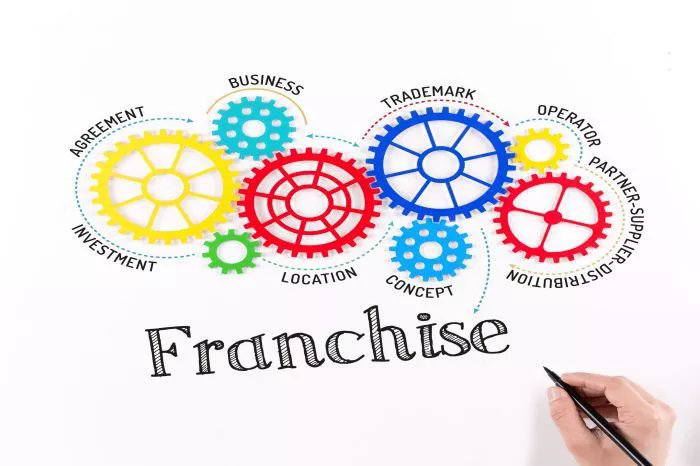Understanding the Distinctions: Franchise vs. Chain
In the realm of business, both chain and franchise models present pathways to success, yet they diverge significantly in their structures, operations, and ownership dynamics. While the terms “chain” and “franchise” are often used interchangeably, it’s essential to grasp their unique attributes and implications. In this comprehensive analysis, we’ll explore the most critical differences between franchises and chains, shedding light on their advantages, disadvantages, and operational intricacies.
Differentiating Franchises and Chains
Ownership & Management
- Chain: In a chain, each outlet or location is owned and operated by the parent company. For instance, Starbucks maintains complete ownership and control over all its branches, dictating everything from menu prices to staffing decisions.
- Franchise: Contrarily, franchises entail individual ownership, with each location operated by a franchisee who purchases the rights to use the parent company’s brand and business systems. Franchisees adhere to corporate guidelines but maintain autonomy in day-to-day operations.
Allocation of Profits
- Chain: Profits accrued by chain stores are retained entirely by the parent corporation, which assumes sole ownership of earnings generated across its locations.
- Franchise: In contrast, franchisees remit monthly fees to the franchisor in exchange for brand support and operational resources, with profits shared between the franchisee and franchisor.
Distribution of Losses
- Chain: Losses incurred by a chain are absorbed by the parent company, shielding individual outlets from financial liabilities.
- Franchise: Franchisees and franchisors share the burden of losses, with financial risks distributed between both parties.
Control
- Chain: Parent companies wield full control over chain operations, dictating business strategies, policies, and decisions across all locations.
- Franchise: Franchise operators enjoy a degree of independence, as franchisors grant leeway in executing business plans while adhering to established brand standards.
Financing
- Chain: Financing for chain expansions primarily stems from internal sources or lending institutions, as parent corporations rely on profits and external funding to fuel growth.
- Franchise: Franchisees serve as the primary source of funding, investing in startup fees and ongoing royalties to establish and operate franchise locations. Financing options may include SBA loans or alternative funding mechanisms.
The Franchise Paradigm: A Deeper Dive
Franchise Overview
- A franchise empowers individuals to operate business locations under the parent company’s brand name, leveraging established systems and trademarks.
- Franchisee: The franchisee manages day-to-day operations, adhering to corporate guidelines outlined in the Franchise Disclosure Document (FDD).
- Franchisor: The franchisor grants licensing rights to franchisees, offering support in training, marketing, and operational aspects.
Advantages of Franchising
- Brand Recognition: Franchisees benefit from established brand equity, enhancing consumer trust and facilitating market penetration.
- Operational Support: Franchisors provide training, marketing assistance, and operational guidance to streamline franchise operations.
- Proven Business Model: Franchisees inherit a validated business framework, minimizing the risks associated with entrepreneurial ventures.
Considerations for Prospective Franchisees
- Compatibility: Aligning with the franchisor’s values and business objectives is crucial for long-term success.
- Support Structure: Assessing the level of support provided by the franchisor, including training, marketing, and ongoing assistance, is essential.
- Research: Thorough due diligence is necessary to evaluate franchise opportunities, considering factors such as market demand, competition, and financial viability.
Deciphering the Chain Model
Chain Operations
- Chains entail centralized control, with parent companies overseeing all aspects of business operations, including product offerings, pricing, and customer experience.
- Uniformity across chain locations ensures consistency in branding, service quality, and operational standards.
Advantages and Challenges
- Brand Consistency: Chains maintain uniformity in product offerings and customer experience, bolstering brand loyalty and recognition.
- Operational Rigidity: Centralized control may limit flexibility and innovation, hindering rapid adaptation to market changes or consumer preferences.
Market Testing and Adaptation
- Chains leverage select locations as test markets to trial new products, marketing strategies, or operational enhancements before broader implementation.
- This approach enables chains to gauge consumer response and refine strategies without compromising the entire network.
Conclusion: Navigating Franchising and Chains
In essence, while franchises and chains share commonalities in their multi-location structures, their ownership models, profit distribution mechanisms, and operational dynamics distinguish them significantly. Whether embarking on a franchising journey or delving into chain operations, understanding these nuances is paramount for informed decision-making and sustainable business growth. Aspiring entrepreneurs must assess their goals, preferences, and risk tolerances to determine the most suitable path forward in the dynamic landscape of franchising and chains.

